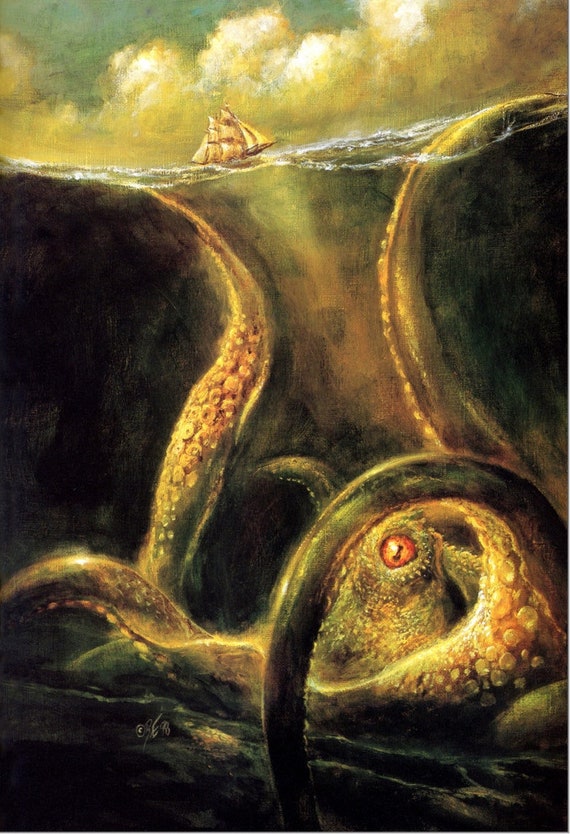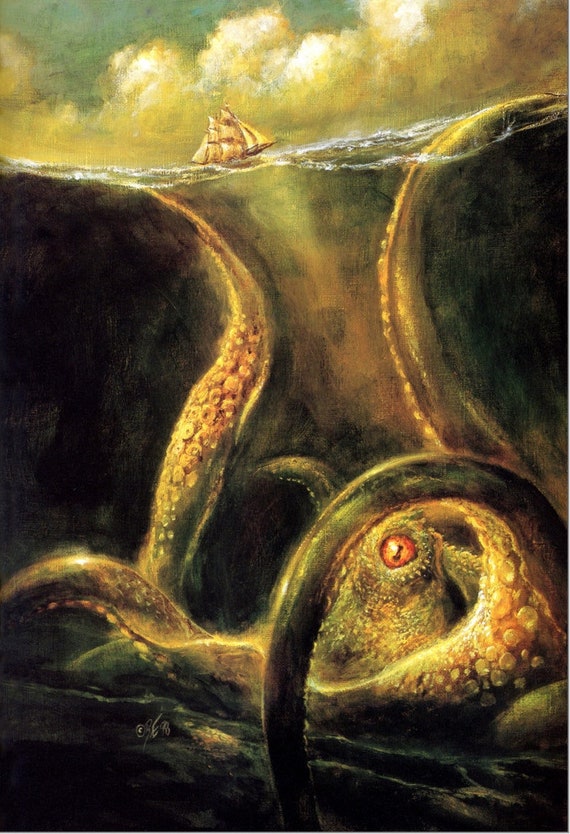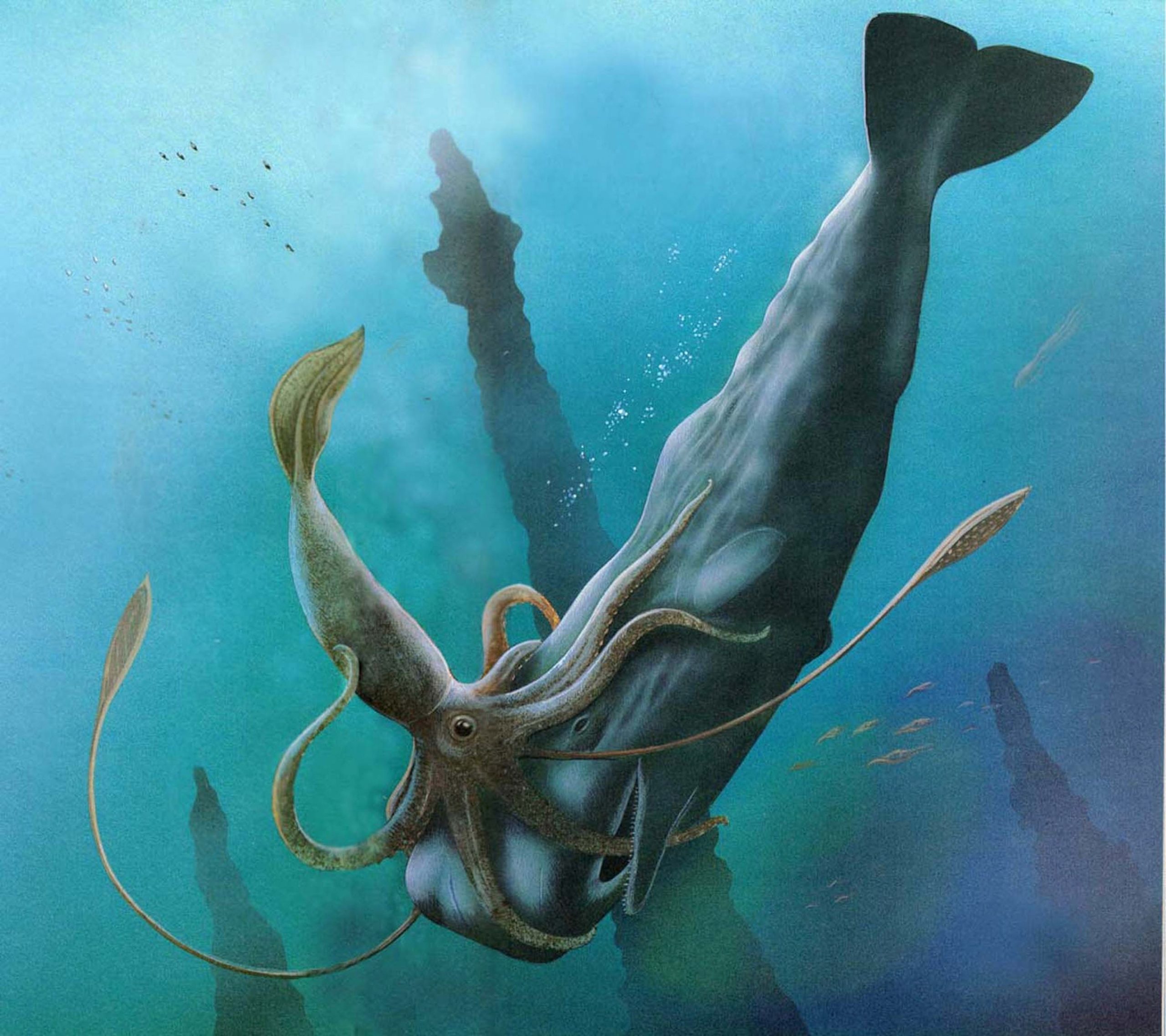The Kraken: A Legendary Sea Monster
The Kraken is a creature that has fascinated sailors and storytellers for centuries. This legendary sea monster, often depicted as a colossal squid, is said to be capable of dragging ships and their crews into the depths of the ocean. Its name is believed to derive from the Old Norse word “krake,” which means something twisted or curled, aptly describing its tentacle-laden form.
Originating from Scandinavian folklore, the Kraken is steeped in myth and mystery. The tales of this monstrous being first emerged in the 13th century, recounting harrowing encounters with immense sea creatures. These stories painted vivid images of massive tentacles rising from the depths and crushing vessels, leaving sailors terrified. Over the years, some have suggested that these tales may have stemmed from real encounters with giant squids, known to reach lengths of up to 43 feet (13 meters).
The Historical Context of the Kraken
The Kraken myth gained traction in the minds of seafarers, often serving as an explanation for the unknown dangers lurking in the ocean’s depths. The consistency of reports from various mariners has led to speculation about the origins of this fearsome creature. Some believe that sightings of the Kraken may have been exacerbated by tectonic activity such as earthquakes, which could displace deep-sea animals and bring them closer to the surface.
Moreover, the psychological aspect of the vast and isolating ocean has likely played a role in the creation of the Kraken legend. With the ocean’s unpredictable nature, it’s no wonder that sailors would concoct stories of monstrous creatures to explain their fears. The idea of a gigantic beast lurking beneath the waves provided a metaphor for the dangers they faced daily.
Debunking the Kraken Myth
Despite its terrifying reputation, the Kraken is not a distinct species of sea monster. Rather, the myth is largely an amalgamation of various sea creatures, particularly giant squids and other marine animals. The creature has no scientific basis as a separate entity. Instead, it serves as a representation of human fears regarding the ocean and what may lie beneath its surface.
While the Kraken itself has no verified existence, the giant squid (Architeuthis dux) does provide a tangible link between myth and reality. Researchers, like Edie Widder, have captured footage of giant squids, showcasing their size and mysterious behavior. Given that we have only explored a small portion of our oceans, it’s not entirely out of the question that unknown creatures are yet to be discovered, further feeding into the allure of the Kraken myth.
Fascinating Facts About the Kraken
The Kraken has evolved into a symbol of the unknown, inspiring countless films, books, and television shows. Interestingly, early depictions of the Kraken often resembled giant crabs rather than the squid-like behemoth we know today. Various cultures have their own interpretations of sea monsters that share similarities with the Kraken, showcasing humanity’s long-standing fascination with the ocean’s mysteries.
In modern parlance, the term “Kraken” is frequently used to describe something large and powerful. Many believe the myth may have originated from the inherent dangers of navigating treacherous waters, rather than actual sightings of creatures. Ultimately, the Kraken continues to captivate our imaginations and represents not just a mythical beast, but the deep-seated fears and wonders associated with the vast, unexplored ocean.
References:
Norse Myths – Kraken Sea Monster Print Poster – link
Did Ancient Sea Monster Turn Prey Into Art? – link
Categories: Do you know, History, Mythology, Paranormal
Tags: folklore, Kraken, Mythology, Ocean, Sea Monsters
Religion: Norse Mythology
Country of Origin: Denmark, Norway, Sweden
Topic: Paranormal
Ethnicity: Scandinavian





